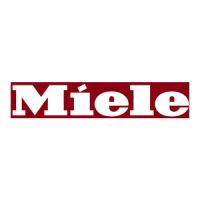Technical Information
65
T 80xx
110 Technical Service Bulletins
1 Dryer Venting Information
The four most common dryer venting options are shown below along with
their benefits and limitations. Any one of the four will allow the dryer to
exhaust effectively and safely. The major differences are their ease of
installation and the amount noise you can here while using them. This
information applies to all dryers, but noise levels in general will always
increase as the air flow produced by the dryer increases.
The options are shown in the order of most commonly to least commonly
used.
4” Flexible Foil Ducting
Benefits
Limitations
Easy to install
Noisiest type of
ducting
Easier to move machine
once installed
Has a tendency to
kink and bend if
not careful
Inexpensive
Least efficient at
exhausting heat
No angle adapters
needed
4” flexible foil ducting is the easiest to install in most applications. Due to
its flexibility this ducting can twist, bend, and kink if installations are not
carefully done. During dryer operation the duct may move and bounce due to
the airflow inside. This movement, along with the bends and internal ribbing,
creates turbulence in the airflow, which we hear as noise. This noise is
normal and cannot be reduced unless different ducting is installed. If installed
properly, this type of ducting works satisfactorily, but the noise may prompt a
call from customers, who think there is a problem with the dryer.
To determine whether the dryer is making noise or if it’s the ducting,
disconnect the duct from the dryer and run the dryer empty. If the noise
disappears after the ducting is removed, the problem is not with the
appliance.
If the ducting is clogged or kinked, the Filter/Vent light will come on as
an indication that there is an exhaust airflow problem.
4” Flexible Aluminum Ducting
Benefits Limitations
Reduced noise
Slightly more difficult to
install
Flexible
Has a tendency to kink
if not careful. May need
adapters to make a
tight 90° turn

